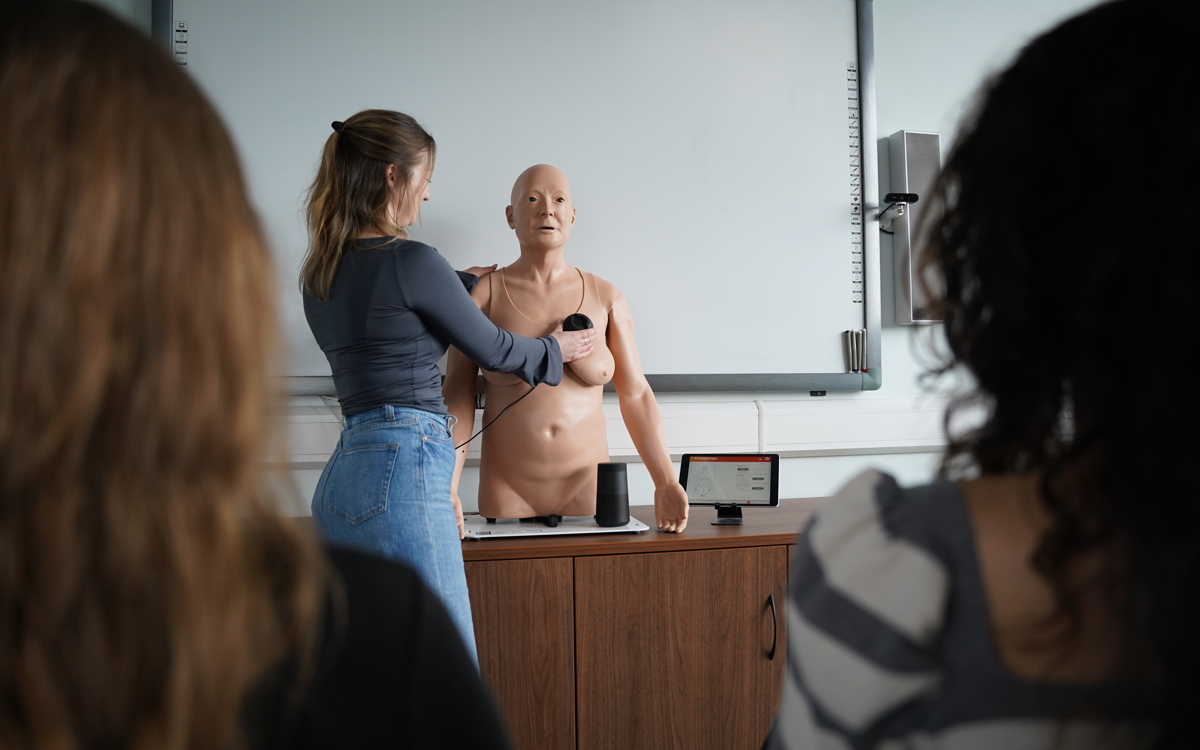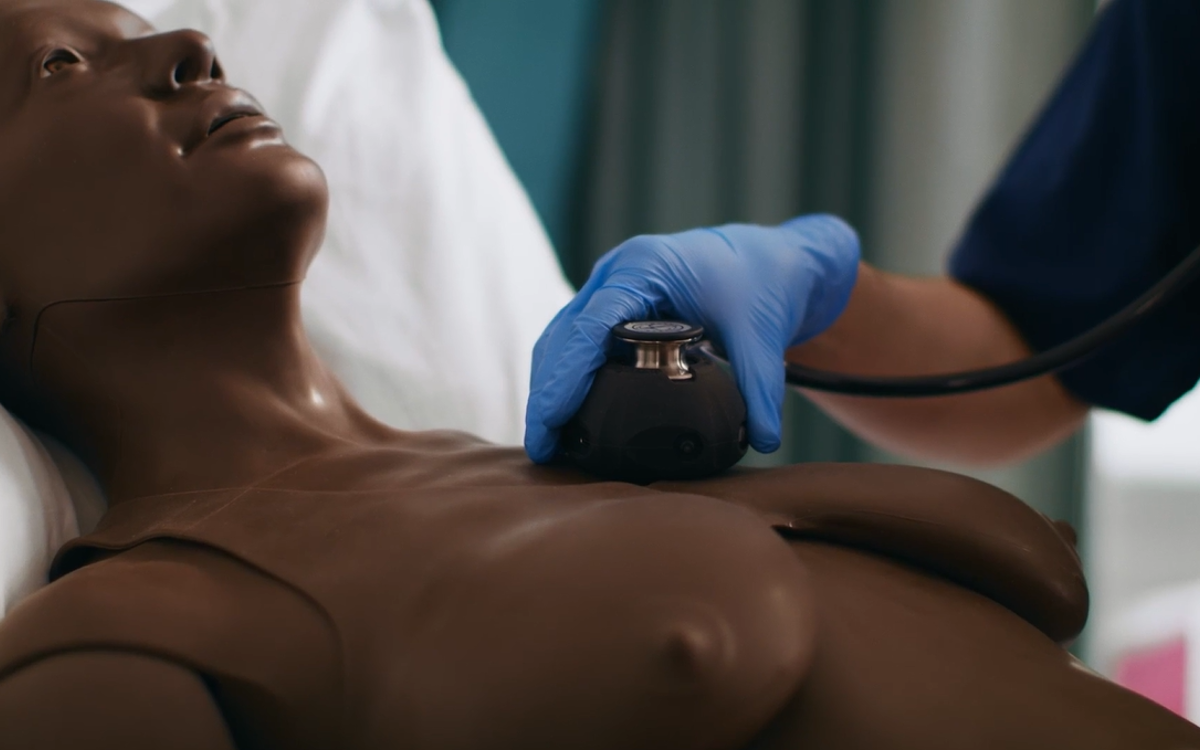Bridging the Gap: Classroom Learning to Clinical Placement
Discover how CaRE can be seamlessly incorporated into teaching blocks prior to clinical placement

Simulation training provides students with a valuable opportunity to build confidence in their skills before starting clinical placements. By replicating the challenges of real healthcare scenarios, simulation allows students to refine their skills through repeated practice and continuous feedback. With the Nursing and Midwifery Council (NMC) allowing up to 600 hours of simulated training (1), it’s an essential tool for practicing scenarios that are rare or difficult to encounter during placements.
Designed with this in mind, the Cardiovascular and Respiratory Examination Trainer (CaRE) offers a hands-on learning experience for all skill levels, enabling instructors to easily integrate it into their simulation teaching blocks. Students can gain confidence in auscultation by learning correct stethoscope placement directly from their instructor. With patented synchronised pulses, realistic heart & lung sounds, and dynamic chest movement, CaRE allows students to refine the fundamentals before progressing to advanced skills.
Building a foundation in auscultation skills
CaRE features 23 heart and 10 lung sounds, which can be played in isolation to allow students to refine their auscultation technique using their own stethoscope. By listening to a combination of normal and pathological sounds, trainees can enhance their ability to recognise sounds and identify irregularities that are often underrepresented in traditional auscultation training. Once a solid foundation is built, students can progress to interpreting multiple findings and assessing patient characteristics together using CaRE’s synchronised features. Through this journey, students gain exposure to different levels of cardiorespiratory assessment, preparing them for various scenarios they may face in a clinical setting.
Teaching made easier with Lesson Plan builder
Simulation training is most effective when guided by instructors. CaRE's Lesson Plan mode allows instructors to seamlessly integrate the model into their lessons by pre-saving common scenarios for students to work through, including individual heart & lung sounds or full clinical cases. Notes can be added to each section to highlight key learning points, ensuring students understand what to listen for and why it matters in clinical practice. Whether used for self-directed learning or classroom teaching, CaRE allows multiple students to learn simultaneously, making practical training accessible before they transition into real patient care.
If you want to discover more about CaRE, check out our article on CaRE’s features. Or if you are considering purchasing a CaRE for your institution, view the product page or book a demo with your representative.
Research
Did you like this article?
Share it on social media today and remember to tag us!

